20 Must-Visit Ancient Roman Ruins in Rome
When it comes to ancient history, few places can rival Rome.
Once the home of one of the most important empires in the world, Rome holds some of the most remarkable ancient ruins, drawing millions of visitors each year who come to walk in the footsteps of emperors, gladiators, and philosophers.
The city itself is already a must-visit for any traveler, but especially for those looking to step back in time.
Centuries of history are preserved in Rome’s streets, and the beautiful Roman monuments that were once part of the daily life of ancient Romans thousands of years ago still decorate the streets of Rome today.
The Colosseum, the Roman Forum, and the Palatine Hills are definitely the most famous ancient Roman ruins in Rome.
However, many more Roman buildings are adorning the city and its outskirts.
Some are less popular, and some are not so well preserved, but they are still relevant and deserve attention, after all, they help tell the ancient tales of the Roman Empire!
In this post, we will cover the best ancient Roman ruins you must see in your next visit to Rome!
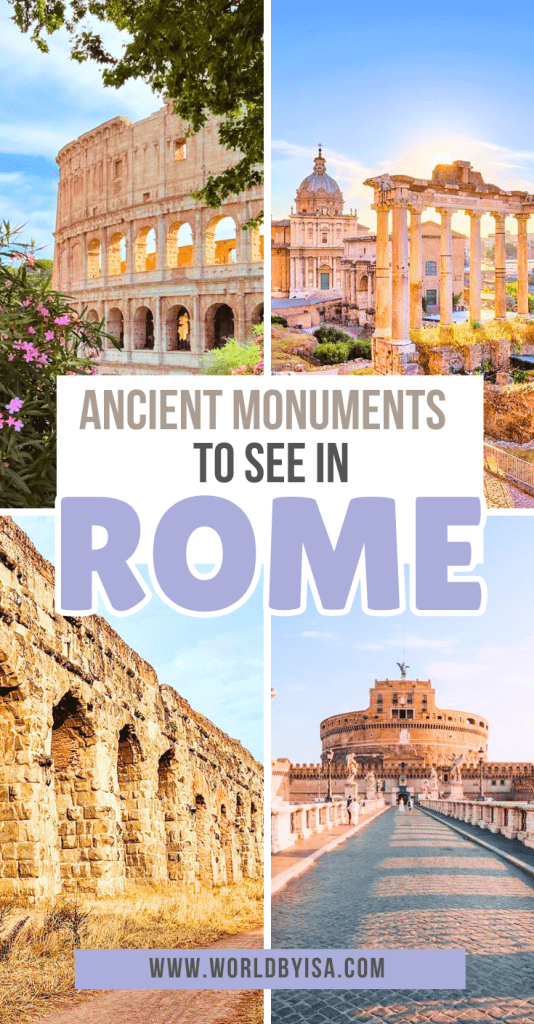
Disclosure: This post does contain affiliate links that I earn a small commission for at no extra cost to you. Any purchases you make through my links help keep the site running. Thanks in advance for your support!
As the saying goes, “Rome was not built in a day”, and since day one, Rome has experienced different people, cultures, and events.
Each one of them left its mark on the Italian Capital that can still be seen nowadays, turning Rome into a special place for history lovers who want to learn more about the history of the civilization.
Since the beginning, Rome has been the most important city in the region, and we can pretty much say that ancient Italy was summarized in Rome, as this was the largest city in the region, while the rest were just small villages.
That said, it is completely safe to assume that Rome is the right place to go if you are looking for the best Roman ruins in Italy.
Nearby Rome, there are many other ancient Roman cities to visit, such as Pompeii and Herculaneum, which can easily be visited as a day trip from Rome.
But let’s dive into the must-visit Roman ruins in Rome:
Ancient Roman Ruins & Monuments In Rome
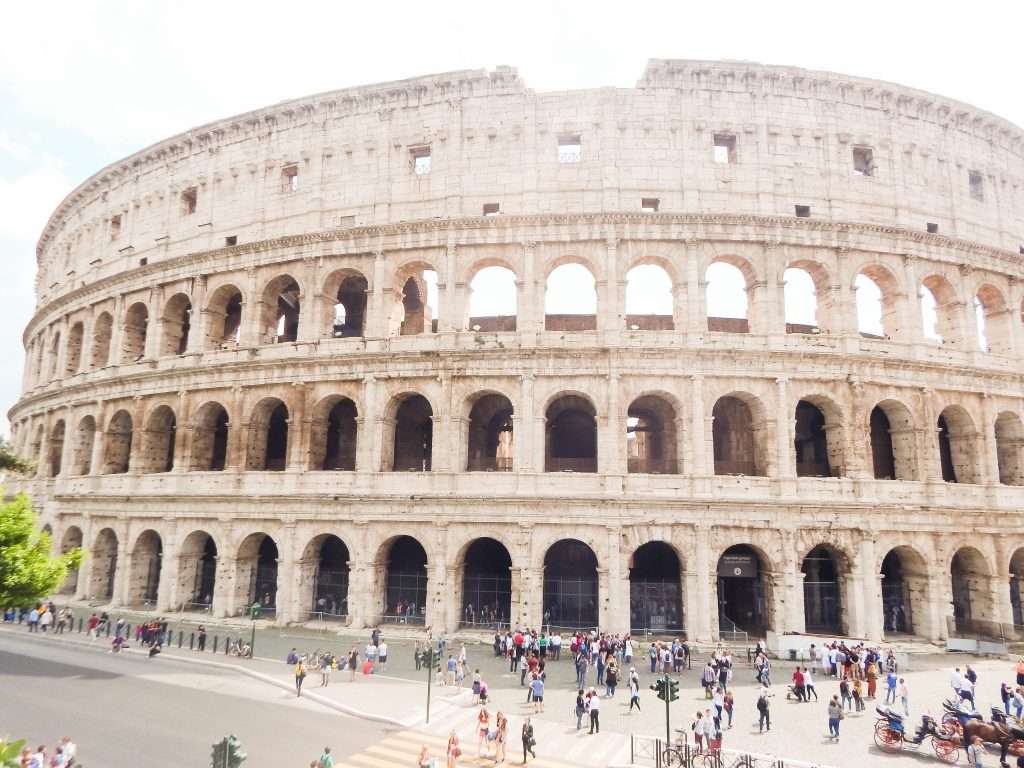
1. Colosseum
The iconic symbol of Italy and the Roman Empire, the Colosseum is undoubtedly the most famous ancient ruin in Rome to visit.
Located in the heart of the Ancient city of Rome, next to Palatine Hill and the Roman Forum, the Colosseum was part of Roman daily life and provided questionable entertainment to the people.
Its construction began in 70 AD and was completed in 80 AD, during the rule of the emperor Titus, and was also known as the Flavian Amphitheater.
With a capacity for more than 50,000 people, the Colosseum served as an arena for sports games, gladiator fights, and executions of prisoners, it was also a place where the inhabitants of Rome had the chance to see exotic animals such as tigers, lions, and elephants, which were used in combat against human beings, Bread and Circus policy at its best.
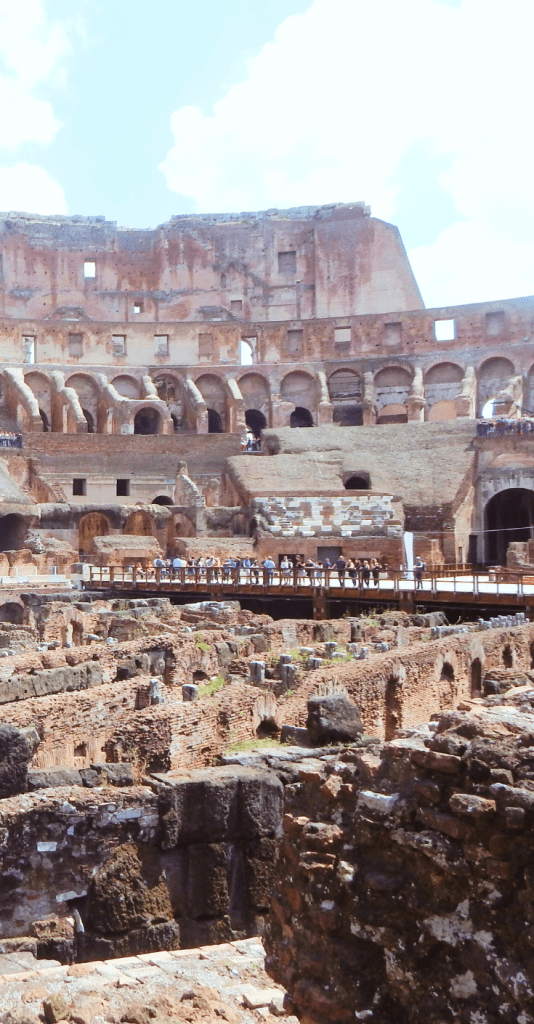
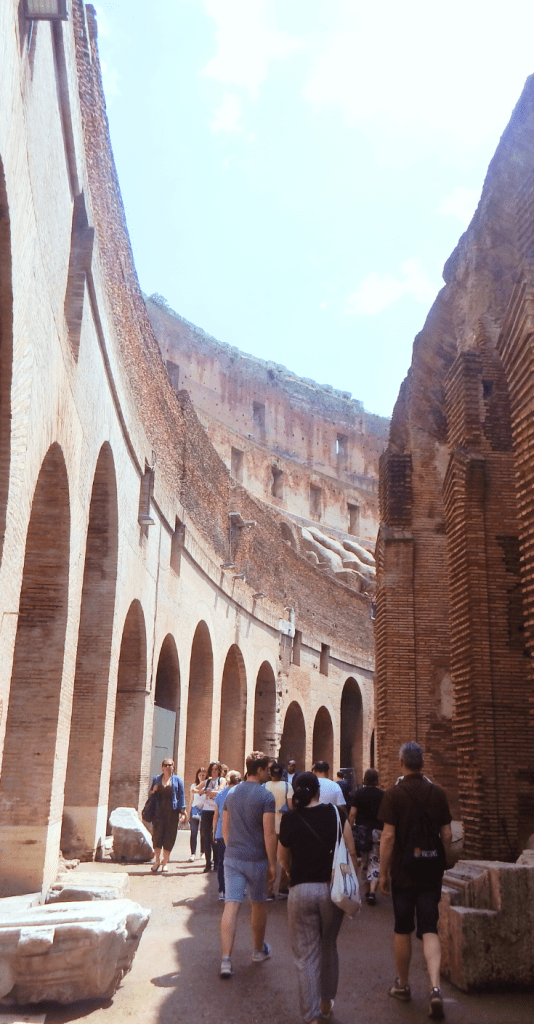
Studies show that the Colosseum could also be flooded and receive naval battles.
Titus inaugurated the Colosseum with a 100-day game that took the lives of around 2,000 gladiators.
It is estimated that during the 390 years that the Amphitheater was used for battles, around 400,000 people died inside, and about 1,000,000 animals were killed.
In fact, the Colosseum was the reason for the complete disappearance of some species in North Africa. Hippos were completely wiped from the Nile river banks, and North African Elephants were extinct, to entertain the Roman population.
Nowadays, it is possible to visit the Colosseum’s interior as well as its underground, where gladiators and prisoners would stay before stepping into the Colosseum. For this experience, though, you have to book a specific tour that includes the underground.
Best Guided Tours of the Colosseum
For those looking for a classic tour, go for this Colosseum, Roman Forum, and Palatine Hill priority ticket.
It is a cheap option that offers you a fast-track entrance, so you don’t need to wait in line. With this ticket, you will get priority access to the three most famous archeological sites in Rome, instead of wasting time in lines.
Here are other tours that I recommend:
- 1 – Colosseum with Underground, Roman Forum & Palatine Hill tour – Skip-the-line tour where you will be able to visit the underground. This tour also includes the Roman Forum and Palatine Hill.
- 2 – Colosseum & Roman Forum Private Tour – With this private tour, you will have all the comfort of being collected from your accommodation, skipping the entrance line thanks to the skip-the-line ticket, and having a private guide during your entire visit to the Colosseum and Roman Forum.
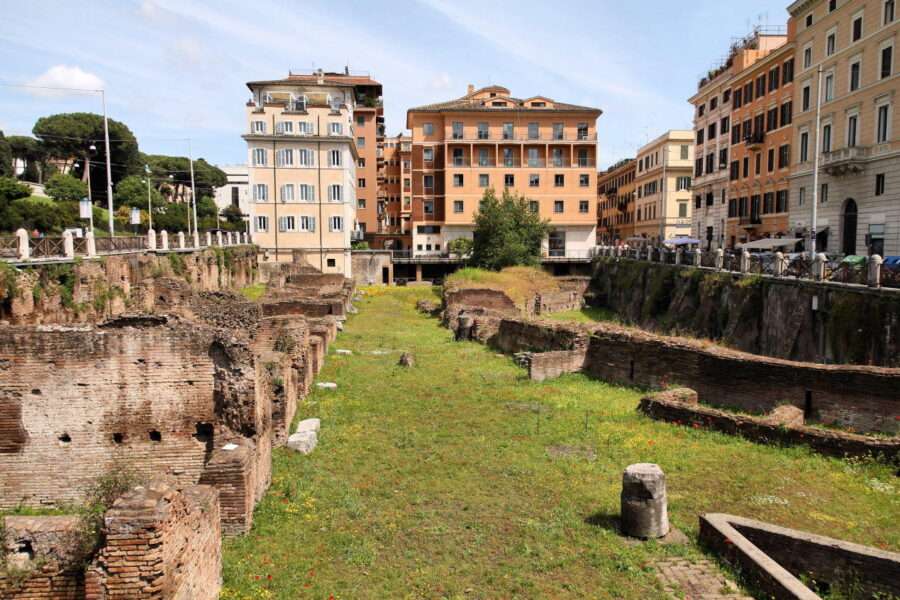
2. Ludus Magnus
Located directly east of the Colosseum, and passing unnoticed by most tourists, is the Ludus Magnus, the largest and one of the most important gladiatorial schools of the Roman Empire.
Gladiators from all over the Empire used to come here to live, practice, and prepare themselves for the games held in the Colosseum next door.
Nowadays, it is still possible to recognize where the barracks used by the gladiators were placed and the areas where they used to practice.
An underground passage linked the gladiatorial school with the Colosseum; this way, they could easily access the Colosseum’s underground.
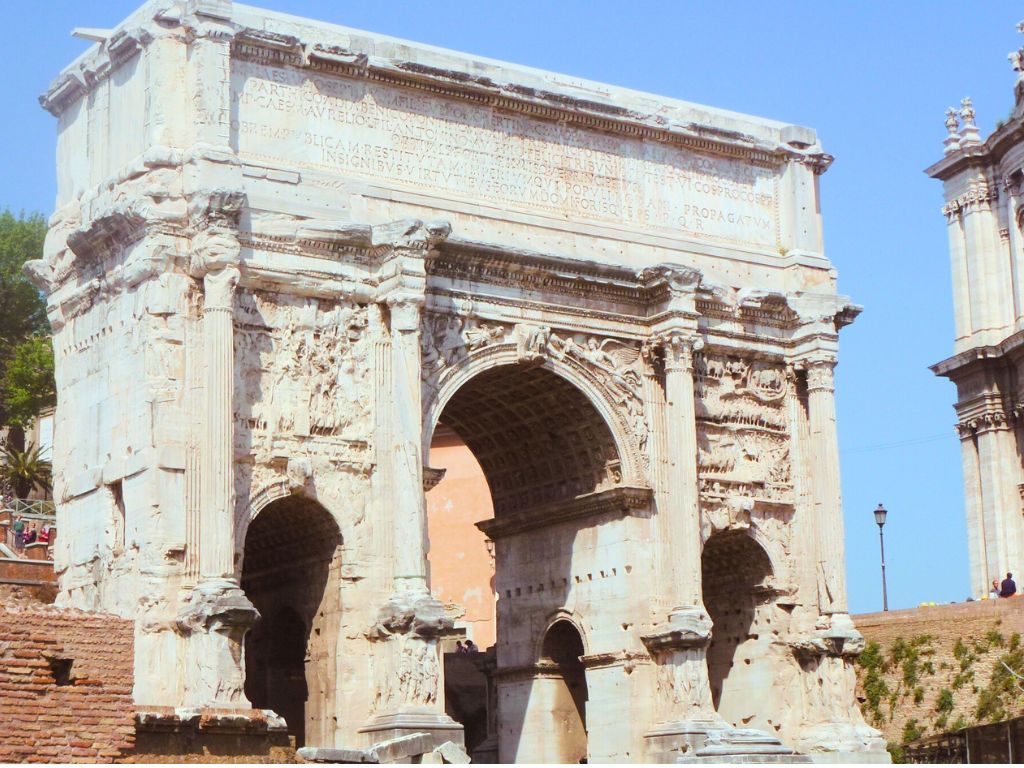
3. Arch of Titus
The Arch of Titus is next to the Colosseum and was erected in 82 AD by Emperor Domitian in honor of his older brother, Emperor Titus, who died in the previous year, 81 AD.
The arch commemorates the military victories of Emperor Tito.
Tito’s death is a cause for much debate. The most accepted story is that he indeed fell ill and ended up dying of fever after having left for the Sabine territories.
Some historians believe that he was poisoned by Brother Domitian himself. Before he died, his last words were: “I just made a mistake”, which some understand as the mistake of not having executed Domitian.
Before being emperor, Titus was promoted to general and assumed the responsibility of putting an end to the Jewish people, in an attempt to stop the rebellion against the authority of Rome.
He successfully completed the task after he besieged and destroyed Judea. As a form of gratitude, the Arc de Triomphe was erected in his honor.
Over the years, the Arch of Titus has served as a model for many Arches of Triumph around the world, including the famous Arc de Triomphe in Paris.
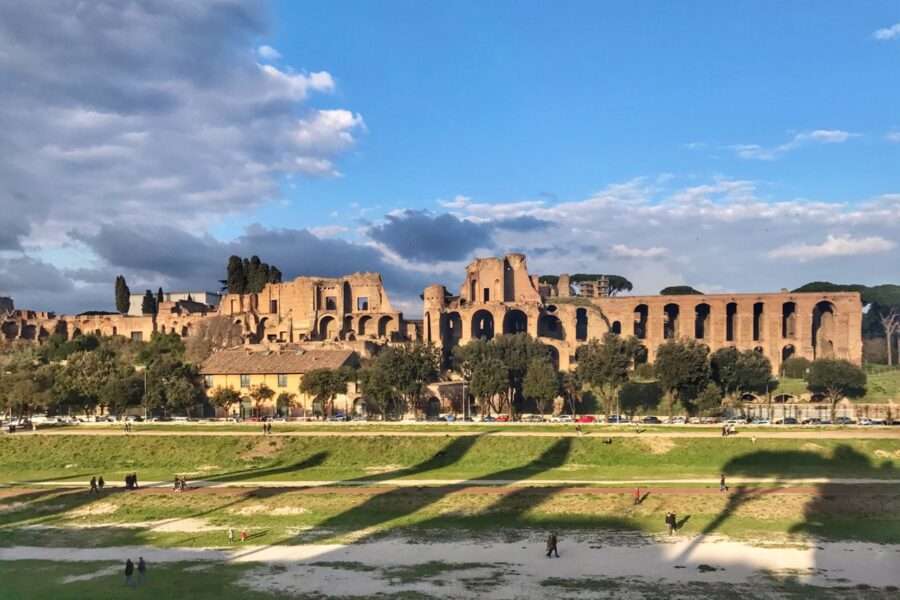
4. Palatine hill
Palatine Hill is one of the seven hills in Rome, associated with the myth of Romulus and Remus.
According to legend, Romulus founded Rome here, in the Palatine Hill, after he famously defeated his twin brother Remus.
Archaeological discoveries on the hill show human activity dating back to the 10th century BCE, making it one of the oldest inhabited areas in Rome.
As the symbolic heart of the Roman Empire, Palatine Hill became the residence of choice for Rome’s elite.
Over time, emperors like Augustus, Tiberius, and Domitian built luxurious palaces here, turning the area into a collection of grand residences, gardens, and temples with sweeping views of the city.
READ: A Guide to The Palatine Hill.
Some of these opulent palaces can still be seen today, as is the case of the House of Augustus, Rome’s first Emperor, and the House of Livia, Augustus’ second wife.
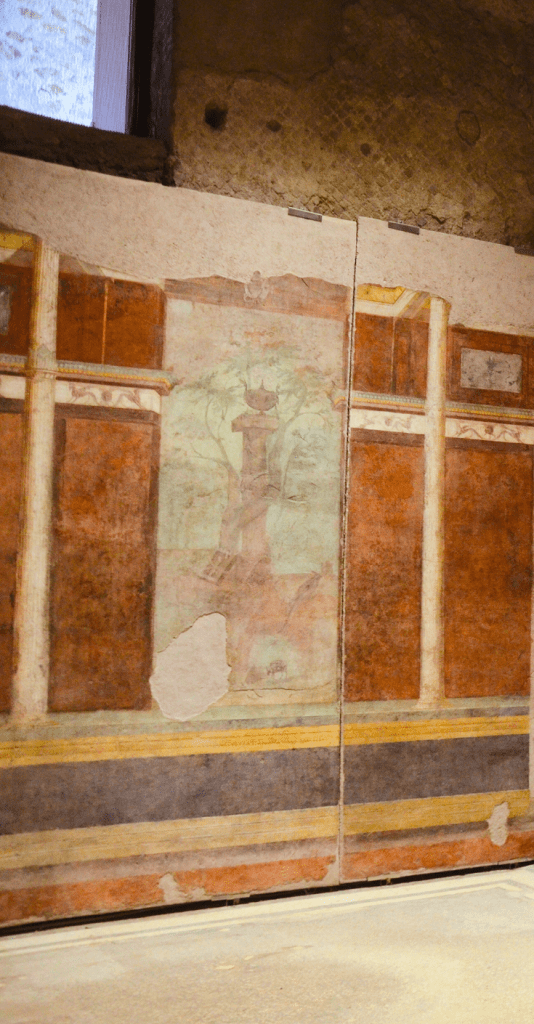
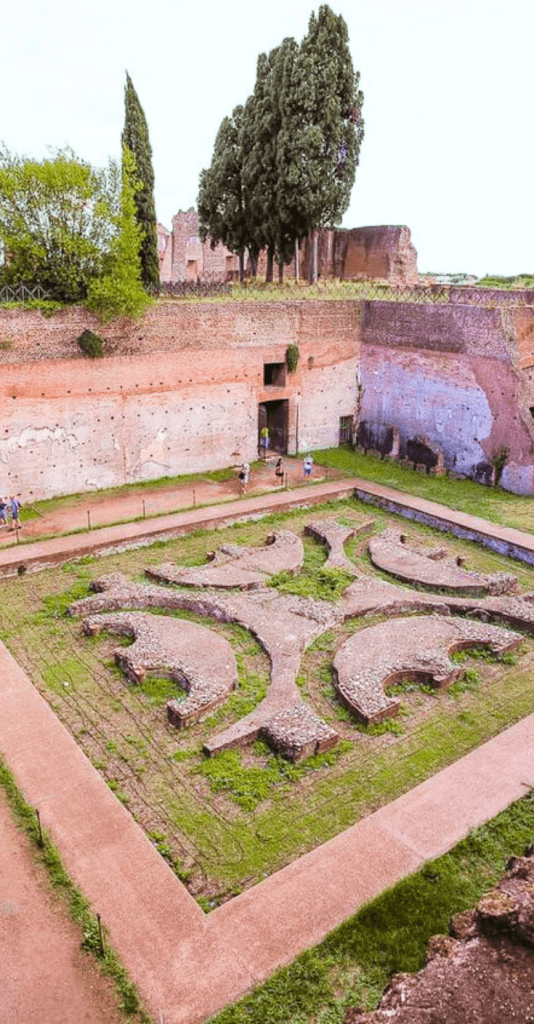
Studies show that the Colosseum could also be flooded and receive naval battles.
Both houses can be visited today, and preserve some of the beautiful wall paintings that give us an idea of what they looked like back in the day.
To do so, however, it is necessary to make an appointment at the entrance of Palatine Hill or wait there until the next tour. This tour takes around 30 minutes.
There’s also the Palatine Museum, where you can see artifacts discovered on the hill, including intricate mosaics, statues, and other remnants of imperial life.
Best Guided Tours of the Palatine Hill
The entrance to the Palatine Hill is already included in the Colosseum, Palatine Hill, and Roman Forum Combo ticket, which gives you priority entrance to the Palatine Hill, Colosseum, and the Roman Forum. You can also take this tour that includes these three ruins + the Colosseum’s underground.
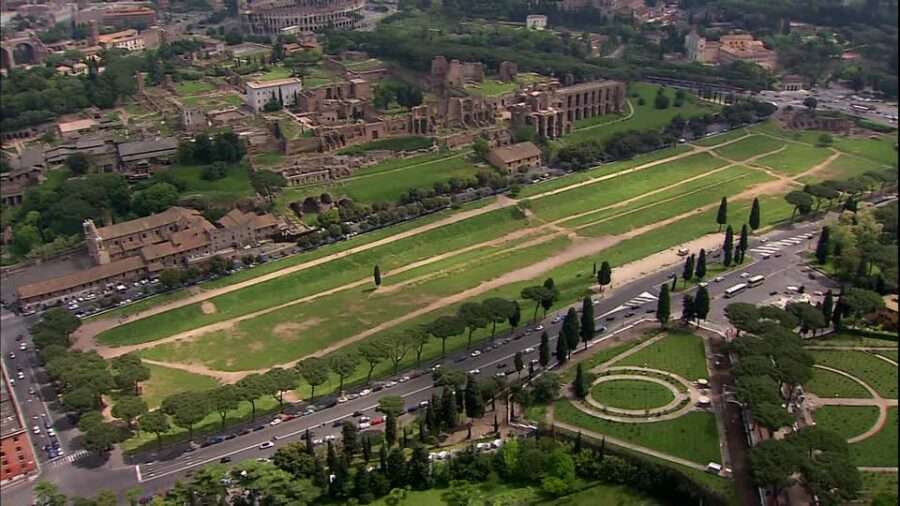
5. Circus Maximus
The Circus Maximus was a hippodrome and arena of ancient Rome and is considered one of the most important entertainment centers of the Roman Empire, and the largest stadium of Ancient Rome, with a capacity of up to 250,000 spectators.
Following the same scheme as the Colosseum, it offered gladiator battles, public executions, as well as chariot races, and other competitions.
Its iconic oblong shape, with a long, central spine called the spina and curved ends, was specifically designed for chariot racing, allowing for dramatic turns and heart-pounding action, keeping the ancient Romans on the edge of their seats.
Another famous entertainment that took place at Circo Máximo was the so-called “Ludus Troianus”, equestrian presentations that simulated battles and were presented by young Roman aristocrats.
It is located between the Aventino and Palatino mountains and can be seen from the ruins of Monte Palatino.
In Ancient Rome, many houses of important people who lived on Palatine Hill overlooked the arena of Circus Maximus, and they could watch the matches from the comfort of their palaces.
Unfortunately, little remains of Circo Máximo; the grassy field and the ancient stone outline still give visitors a sense of its massive scale and historic significance.
The site has since become a beloved public park, where visitors can walk along the track, relax, and imagine the excitement that once filled the space.
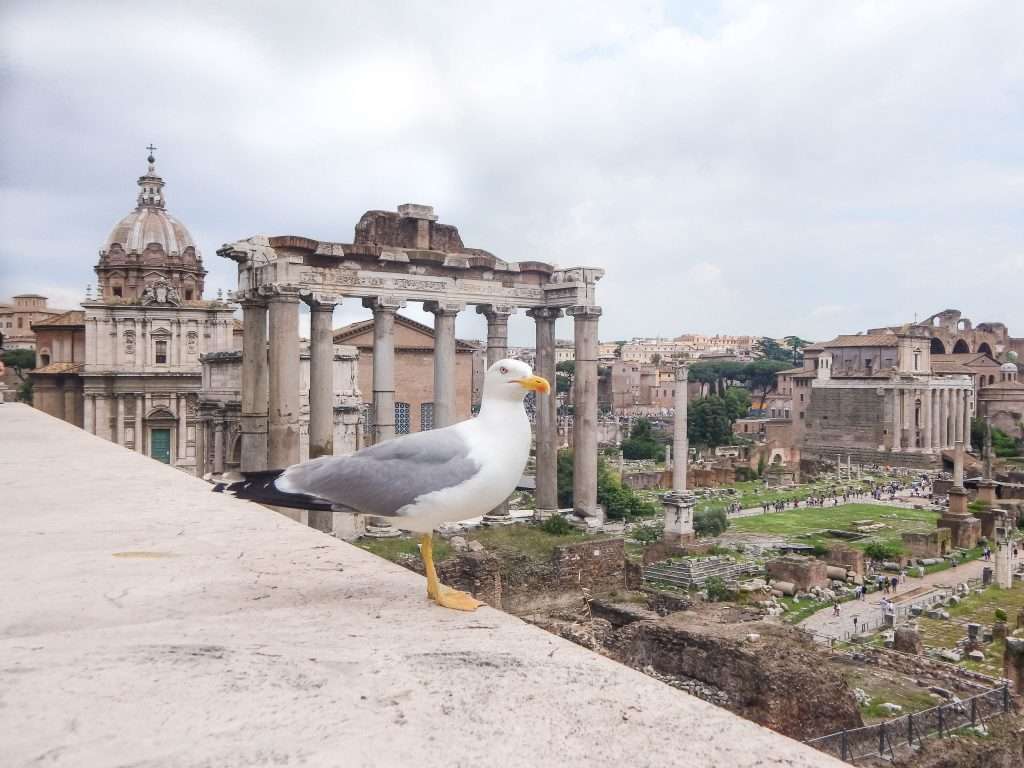
6. Roman Forum
Back in Roman Empire times, forums were the heart of the city and the daily life of its citizens.
They were big rectangular plazas surrounded by important buildings and hosting everything from political debates and judicial proceedings to religious ceremonies, and selling all sorts of goods in the meantime.
While a total of 6 major forums existed in the ancient city of Rome, the Roman Forum was the greatest and the oldest of them all.
Situated in a valley between the Palatine and Capitoline Hills, the Forum evolved over centuries to become a symbol of Rome’s power and civic life.
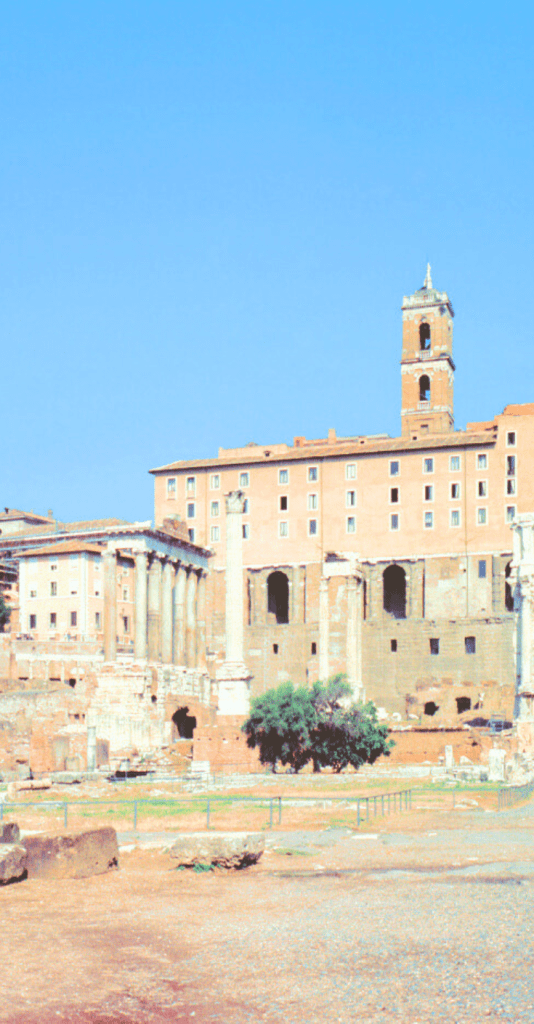
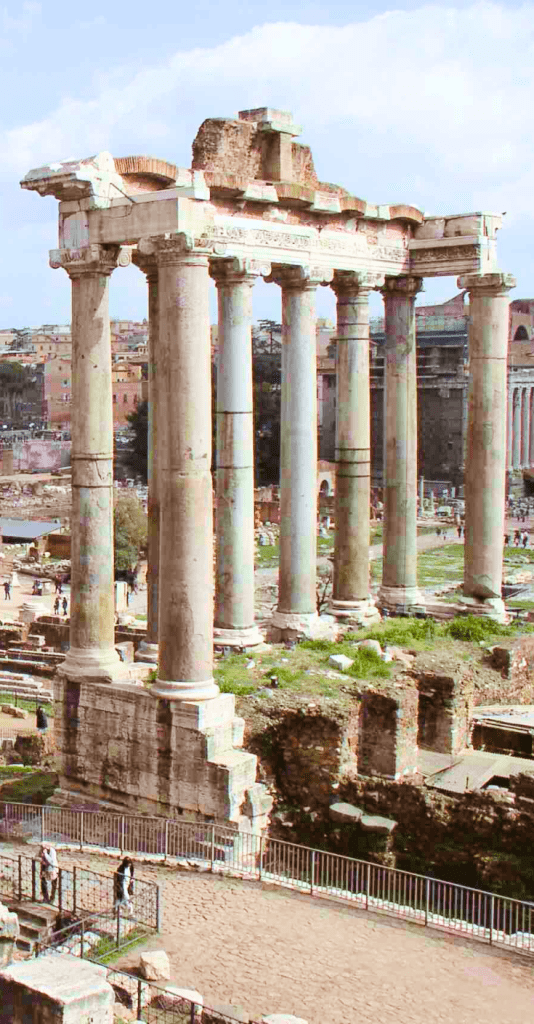
Originally created as a marketplace, it eventually housed important temples, basilicas, and government buildings like the Curia, where the Senate met, and the Temple of Saturn, one of the oldest sacred structures in Rome.
The Via Sacra, a central road that runs through the Forum, linking the Colosseum to the Piazza del Campidoglio, was used for triumphal processions celebrating military victories and is one of the most historic pathways in ancient Roman history.
Another important building is the House of Vestals, located behind a circular building known as the Temple of Vestals, which used to be the residence of the Vestal Virgins, venerated priestesses.
It is hard to understand nowadays the importance of the Roman Forum back in ancient Rome, but bear in mind that it was here that the citizens of Rome witnessed the funeral of Julius Cesar and the execution of Ciceros, to have an idea of the historical importance of this area.
Best Guided Tours of the Palatine Hill
As mentioned before, to visit the Roman Forum, it is necessary to buy a ticket. This ticket is included in the Colosseum, Palatine Hill, and Roman Forum Combo tickets, giving you priority access to these three ruins in Rome.
Alternatively, you can also get this tour that includes these three ruins + the Colosseum’s underground, if you wish to visit the Colosseum’s underground alongside the three main ruins.
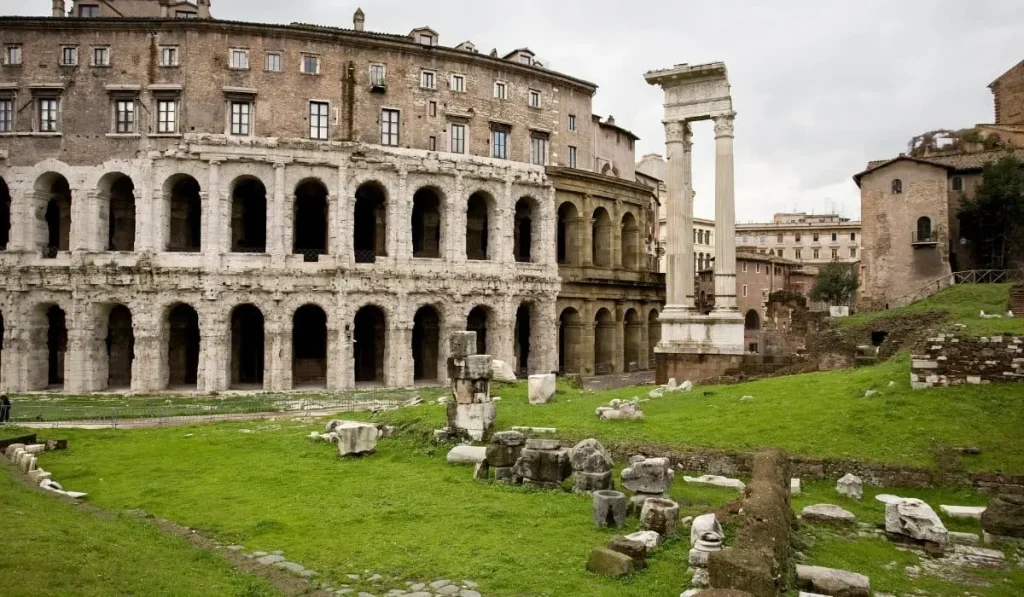
7. Theater of Marcellus
The Theater of Marcellus is like a sneak peek into what the Colosseum might have looked like in its early days.
Built by Emperor Augustus in 13 BCE and named after his beloved nephew Marcellus, this massive open-air theater was another hub for entertainment in ancient Rome.
It could hold around 15,000 spectators, who flocked here to enjoy plays, musical performances, and even mock battles.
With its grand arches and tiered seating, the Theater of Marcellus set the stage, literally, for the iconic architecture of Rome’s later amphitheaters.
What’s really cool is that the theater is still alive in a way.
While the lower levels are preserved as ruins, the upper floors were transformed into Renaissance-era apartments, and they’re still in use today!
It’s a perfect spot to explore if you’re wandering through the Jewish Ghetto or along the Tiber River.
Plus, it’s less crowded than some of the city’s other landmarks.
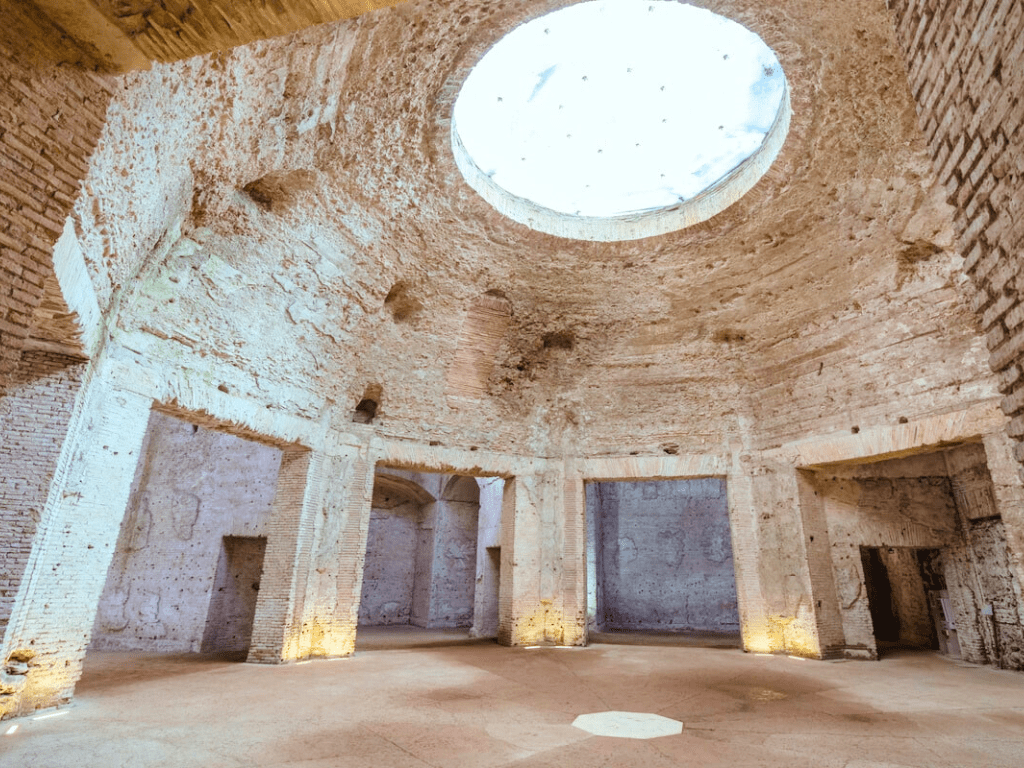
8. Domus Aurea
The Domus Aurea, or “Golden House,” is the palace built by Emperor Nero after the Great Fire of Rome in 64 AD.
Sprawling across the Palatine, Oppian, and Caelian hills, the palace was adorned with gold leaf, precious stones, and intricate frescoes, which earned it its glowing name.
Nero even had a giant artificial lake and gardens that made the place feel more like a resort than a residence.
Today, the Domus Aurea is partially open for guided tours, offering visitors an idea of the excesses of Nero’s life.
The site feels like a hidden world beneath modern Rome, with its vast underground chambers, vaulted ceilings, and colorful artwork still peeking through after centuries.
One of the coolest parts of visiting is seeing the innovative multimedia installations that bring the palace to life, showing what it would have looked like in its prime.
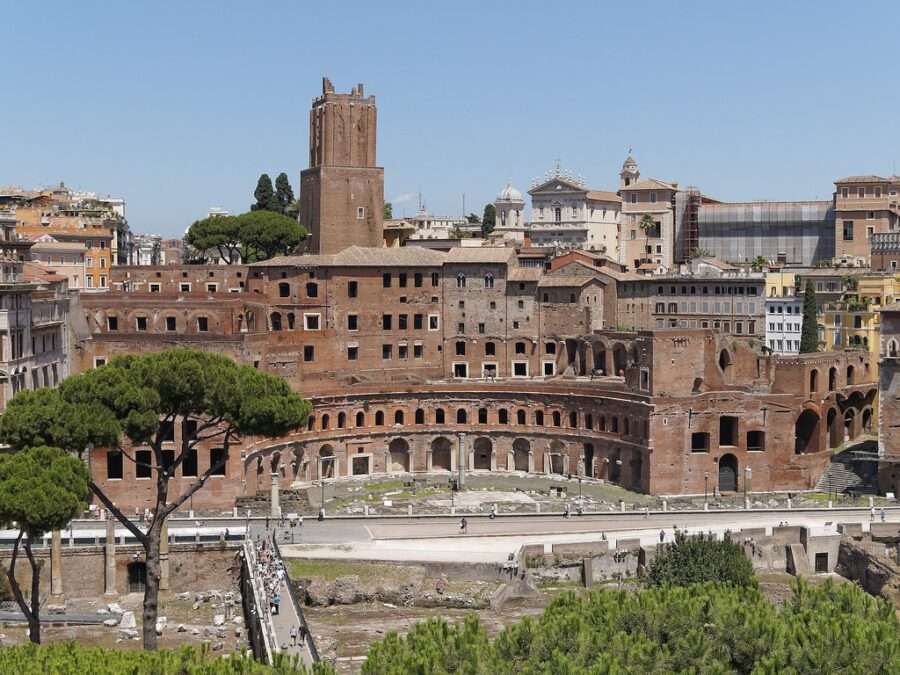
9. Trajan’s Market
The Trajan Market is a well-preserved ruin that, despite its name, was not limited to shops only.
The Trajan’s Market is part of the Trajan’s Forum, which in turn is part of a large set of forums, known as Imperial Forums.
This forum set includes the entire region between the Colosseum and Piazza Venezia.
In this image, you can get a better idea of what this complex was like:
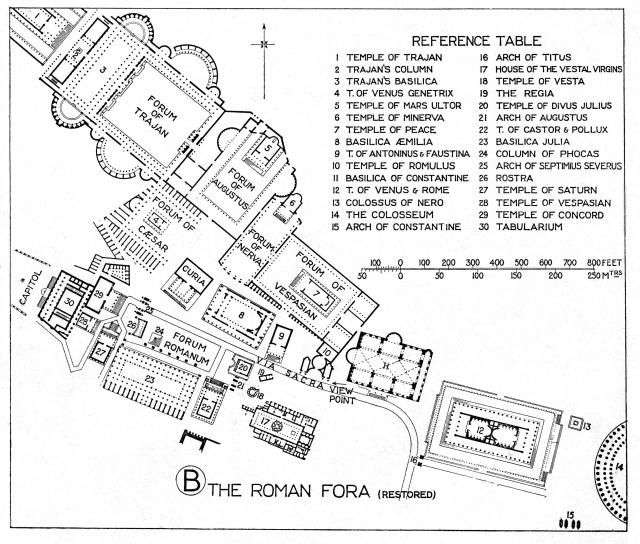
Trajan’s Market was the first covered shopping center in the world, built between the years 100 and 110 A.D.
The building had six floors and more than 150 shops. The products sold in these shops would have come from all parts of the empire and included fruits, vegetables, fish, wine, etc.
While the external part of the complex was intended for commerce, the internal part served as an administrative area.
In addition to shopping and administrative areas, the complex also had gardens and a covered area for exercises and games, which also served as a link between the forums and Suburra, a residential area.
Today, the ruins of Trajan’s Market house the Fori Imperiali Museum.
In the museum, you can see some parts of the interior of the building and learn more about the different aspects and functions of Trajan’s Market and the Imperial Forums around it.
Best Guided Tour of the Trajan Market and Fori Imperiali Museum
Get a guided tour through the Trajan Market and Fori Imperiali Museum, in, you will be joined by a professional guide who can provide you with more information about the area. The tour also includes a 25-minute video on Ancient Rome.
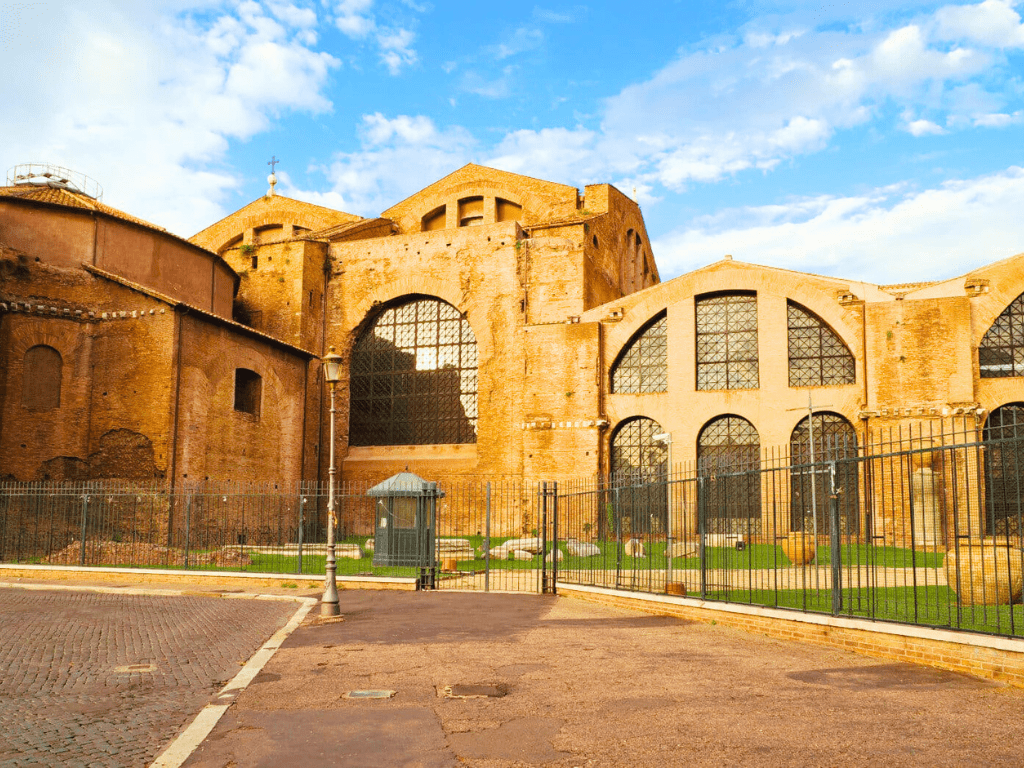
10. Baths of Diocletian
The Baths of Diocletian were the largest and most ambitious of all the public baths in ancient Rome, built between 298 and 306 AD.
This sprawling complex could hold up to 3,000 people at once.
The baths were equipped with everything from heated pools and saunas to gymnasiums and libraries.
Today, the remnants of the Baths of Diocletian are partially integrated into the Basilica of Santa Maria degli Angeli e dei Martiri, designed by Michelangelo himself.
The site also houses parts of the National Roman Museum, where you can see ancient sculptures, inscriptions, and artifacts that help piece together what life in the baths was like.
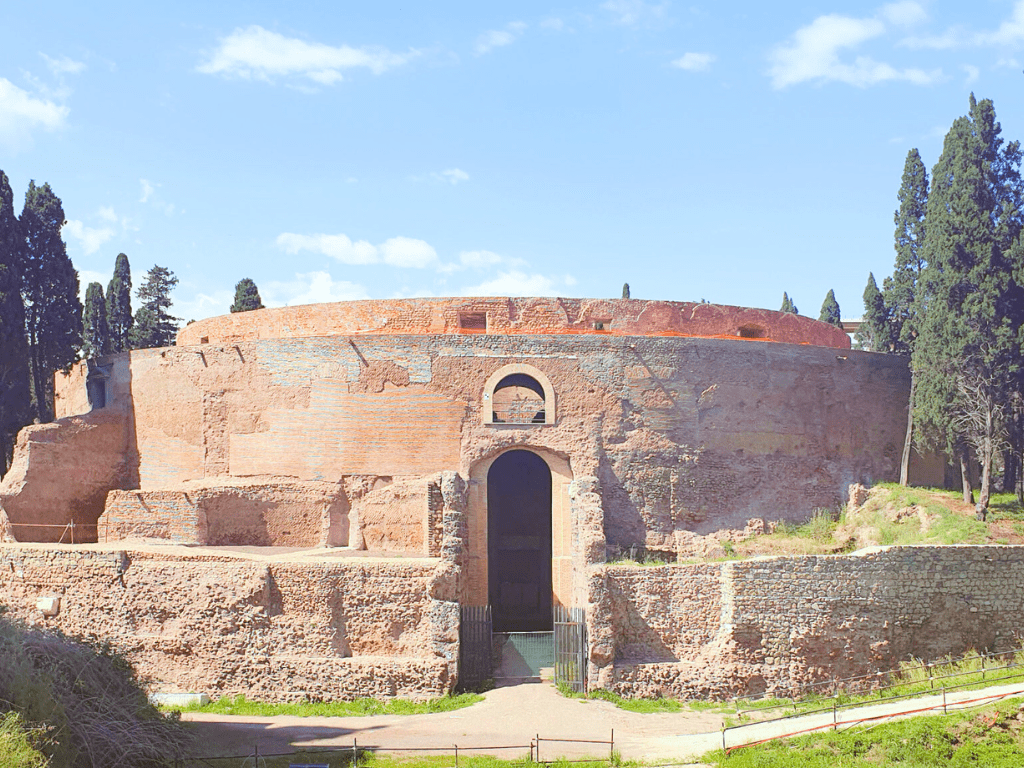
11. Mausoleum of Augustus
The Mausoleum of Augustus was built by the first Roman emperor, Augustus, in 28 BCE.
This enormous, circular tomb was designed to house not only Augustus but also his close family and future emperors, becoming the final resting place for figures like Tiberius and Claudius.
Visiting it now, you can have an idea of how impressive it would have looked at its peak, with white marble cladding and lush gardens surrounding it.
After centuries of change and being used for various purposes, including as a fortress and even a concert hall, the mausoleum fell into disrepair.
Recently, it has undergone extensive restorations and was reopened to the public.
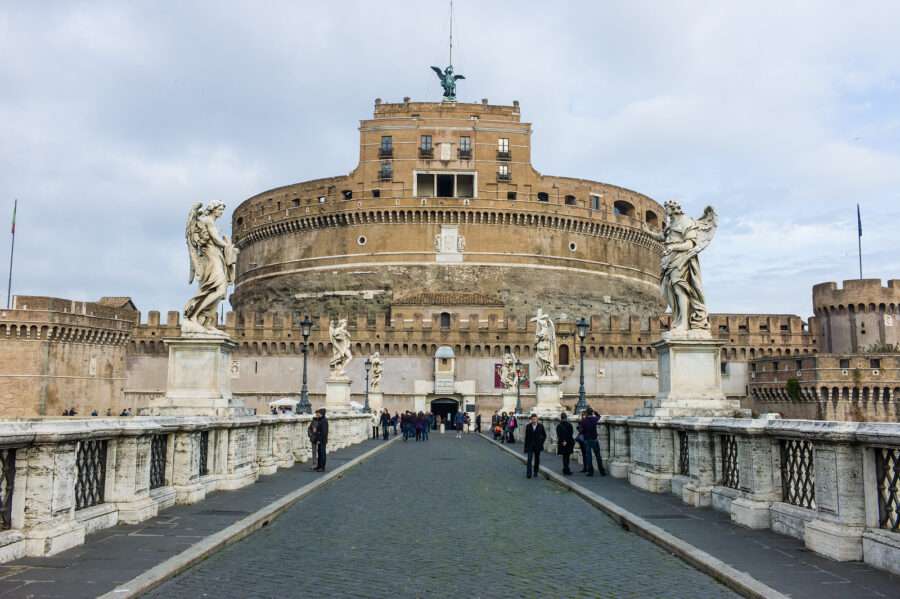
12. Castel Sant’Angelo
Famous as the refuge for popes in times of difficulty, as well as a prison and military base, Castel Sant Angelo is nowadays a museum of military history.
What most people don’t know is that Castel Sant Angelo was built long before the Roman Catholic period.
It is also known as Hadrianeum and was built in the 2nd century AD to be the mausoleum of Emperor Hadrian and his family.
Its strategic position by the Tiber River gave it a significant role in Rome’s defense over the centuries, and soon it began to serve as a military base.
In the Middle Ages, the building still served as a stronghold for the Popes.
Nowadays, Castel Sant’Angelo is a museum known as the Museo Nazionale di Castel Sant’Angelo and displays a mix of historical artifacts, medieval weaponry, Renaissance art, and rooms that reflect the various roles the building has played.
Best Castel Sant’Angelo Tour
You can buy your ticket to Castel Sant’Angelo here. In it, you also have an option of adding an audio guide, which I always recommend if you are not taking a guided tour.
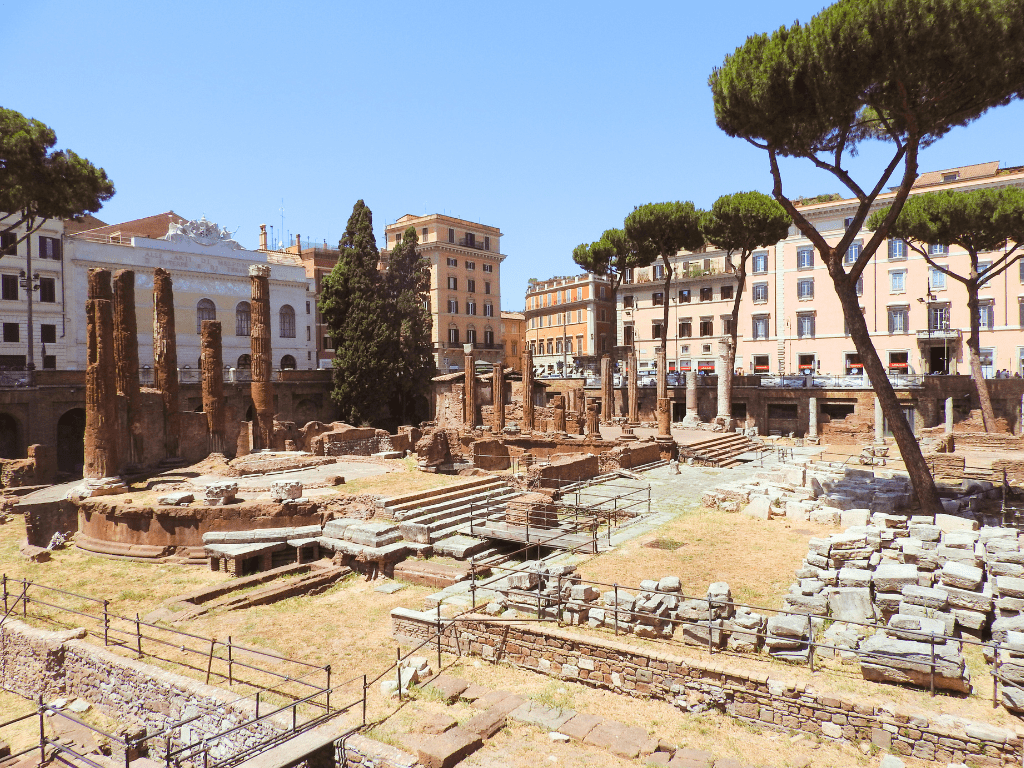
13. Largo ti Torre Argentina
This archaeological site features the remains of four ancient temples, dating back as far as the 3rd century BCE.
But what really sets this spot apart is its link to one of the most famous events in Roman history; this is believed to be the site where Julius Caesar was assassinated in 44 BCE.
Nowadays, dozens of cats roam the ruins freely, lounging on the ancient stones and sunning themselves as if they were little emperors.
The cats have become such a beloved feature that there’s even a dedicated organization on-site to care for them.
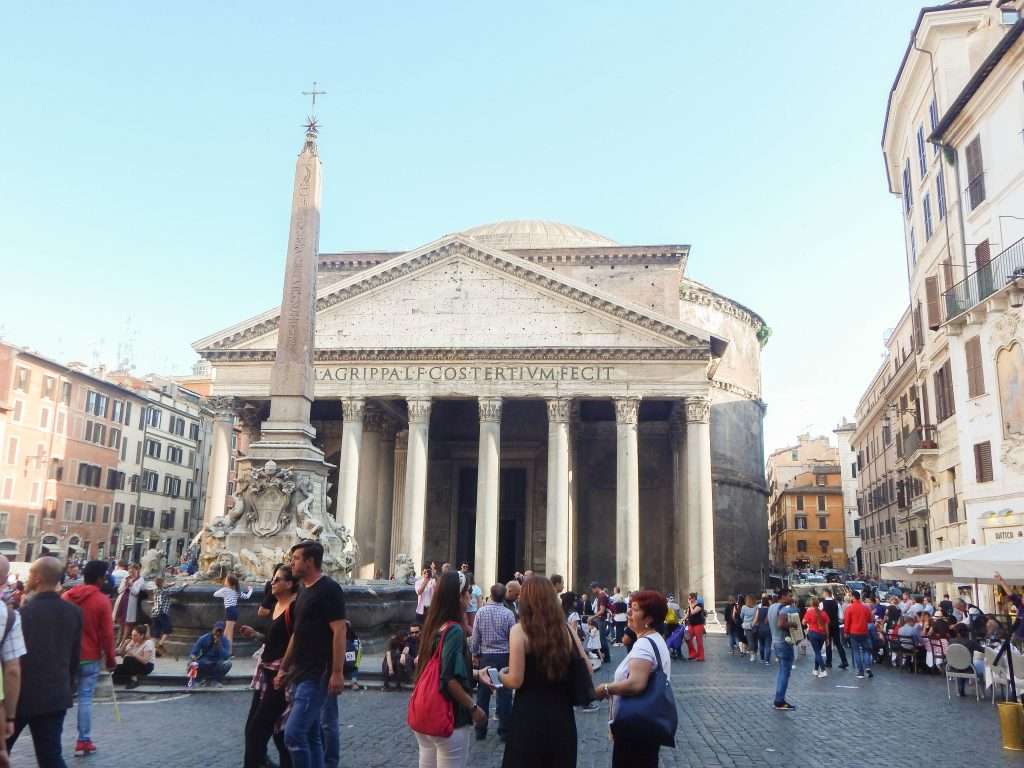
14. Pantheon
Another famous landmark in Rome is the Pantheon, the best-preserved ancient building in the city.
The Pantheon was originally built in 27 – 25 BCE by Marcus Agrippa, who was Emperor Augustus’ right-hand man.
Unfortunately, the building was destroyed by a fire; however, the pediment still proclaims “Marcus Agrippa, son of Lucius, having been consul three times, made it.”.
Two other buildings were erected on this same site, and the one that has resisted until today was built in 125 CE during the reign of Emperor Hadrian, who decided to rebuild it as a Greek Temple.
Pantheon was and still is considered a masterpiece.
Its Corinthian granite columns were brought from Egypt, and its dome, made of lightweight concrete created by the Romans, became a model for Michelangelo’s dome for St. Peter’s Basilica.
At the top of it, there is the oculus, or eye, which is Pantheon’s only source of natural light.
Although we can’t assure the real function of the building, it is believed that the Pantheon was used as a temple for all of the gods.
According to Pliny, a famous Roman author in the 1st century, inside the Pantheon, there were statues of many Roman gods and famous Roman figures, including a statue of Venus wearing a pearl that was once owned by Cleopatra, and Julius Cesar.
One of the reasons why the Pantheon might have survived in such a perfect state until our days is the fact that in an early period, around 608 CE, it was converted to the church of St. Mary of the Martyrs.
Many important figures in Italian history are buried here; among the most illustrious are Vittorio Emanuele II, the king who united Italy, and the famous artist Raphael.
Best Pantheon Guided Tour
If you wish to visit the Pantheon, bear in mind that the lines can get pretty long, so secure a skip-the-line ticket with a professional guide here.
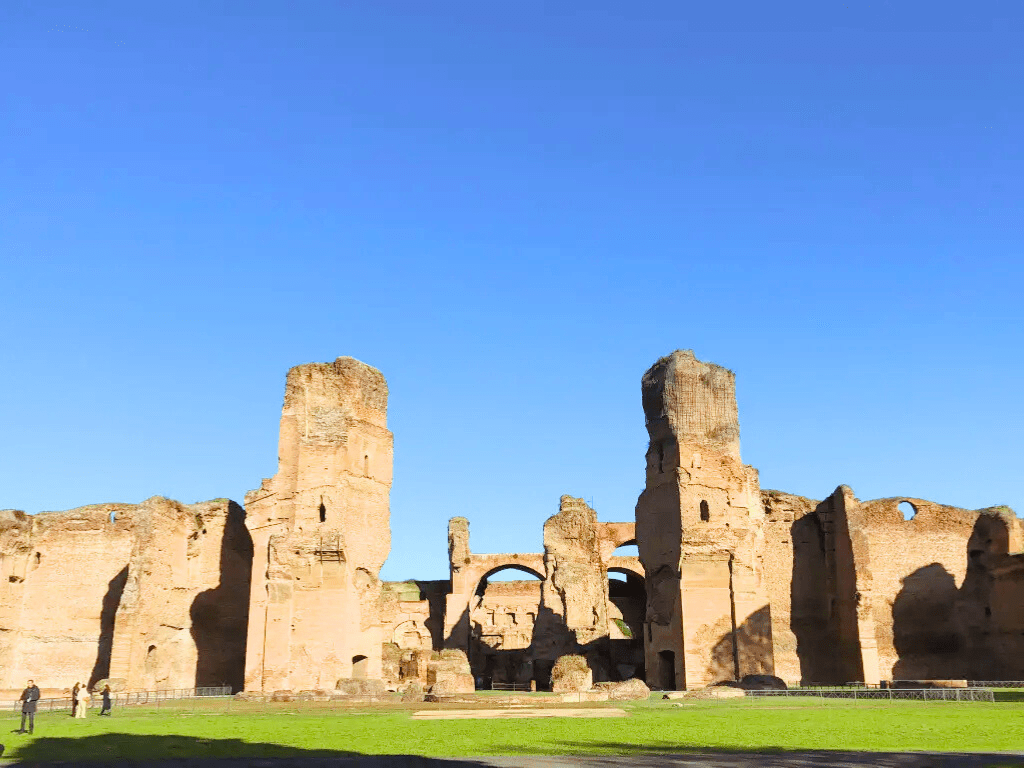
15. Bath of Caracalla
The Baths of Caracalla are an impressive reminder of just how much the ancient Romans loved their luxuries and social life.
Completed in 216 AD during Emperor Caracalla’s reign, these public baths weren’t just for bathing; they were an all-in-one complex for relaxation and leisure.
Covering over 25 acres, they housed hot and cold baths, saunas, swimming pools, libraries, and even exercise spaces.
Inside, the place was decorated with mosaics, marble columns, and elaborate sculptures.
Today, while the roofless remains let sunlight pour in and vegetation has taken hold, the site still impresses with its monumental architecture and preserved details.
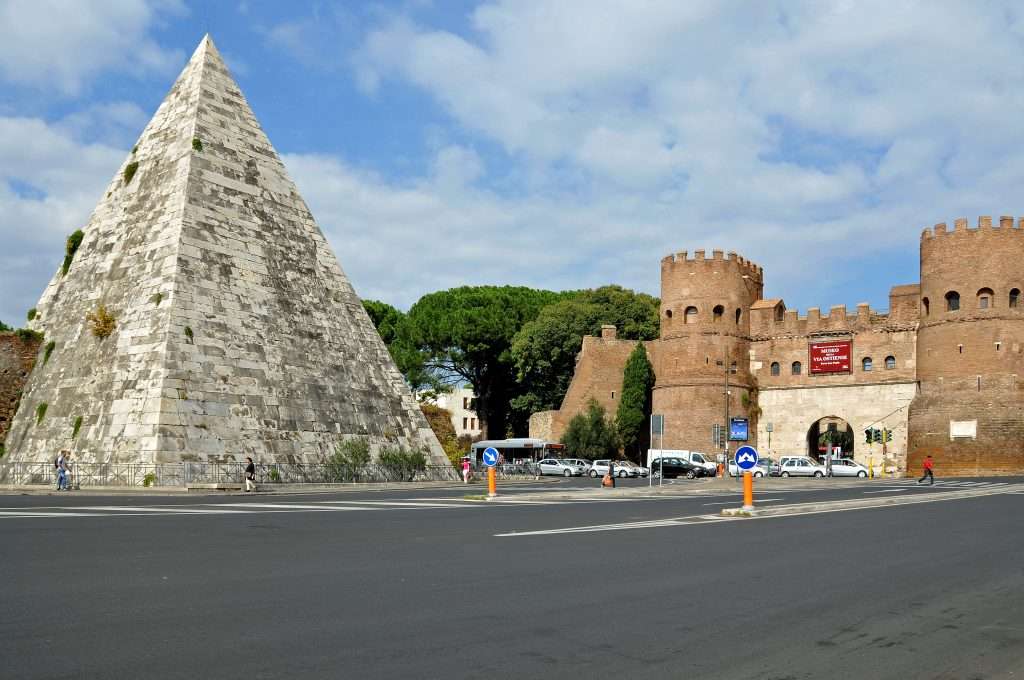
16. Pyramid of Caius Cestius
The Pyramid of Caius Cestius is probably the most unexpected of the ancient monuments in Rome.
After all, an Egyptian-style pyramid is definitely not something that comes to mind when we think about Ancient Rome, right?
Many people who pass by this monument think it might be a new construction, but this pyramid was actually built around 12 BCE!
The white marble pyramid was built to house the tomb of Caius Cestius, a wealthy Roman magistrate who clearly had a flair for the dramatic.
Standing nearly 120 feet tall, it was inspired by the Egyptian pyramids, which were all the rage in Rome after Egypt became part of the empire.
What makes this pyramid so unique is how seamlessly it blends into the Roman cityscape, right next to the ancient Aurelian Walls and near the bustling Testaccio neighborhood.
Inside, the pyramid contains a small burial chamber, once adorned with frescoes, though it’s not open to the public.
But even from the outside, it’s an impressive sight and a fun detour from Rome’s more traditional ruins.
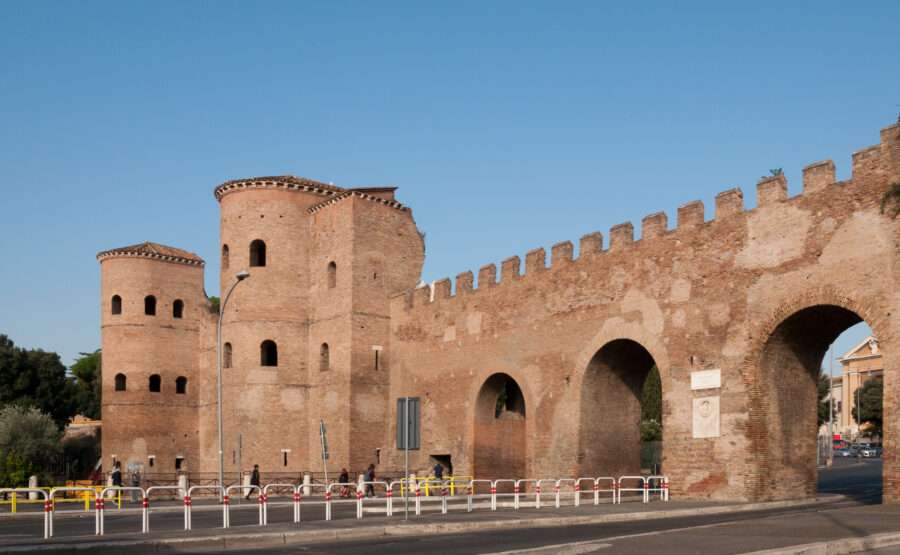
17. Aurelian Walls
Like many other cities, Rome had its own defensive wall, known as the Aurelian Walls, which is considered one of the oldest defensive walls still standing in the World.
It was built in the 3rd century by Emperor Aurelian of Rome to defend the city from the Germanic tribes.
The Aurelian Walls surrounded the entire ancient city of Rome, stretching across 12 miles.
All the famous tourist points in Rome are now located within these walls, including all seven hills and the most popular neighborhoods.
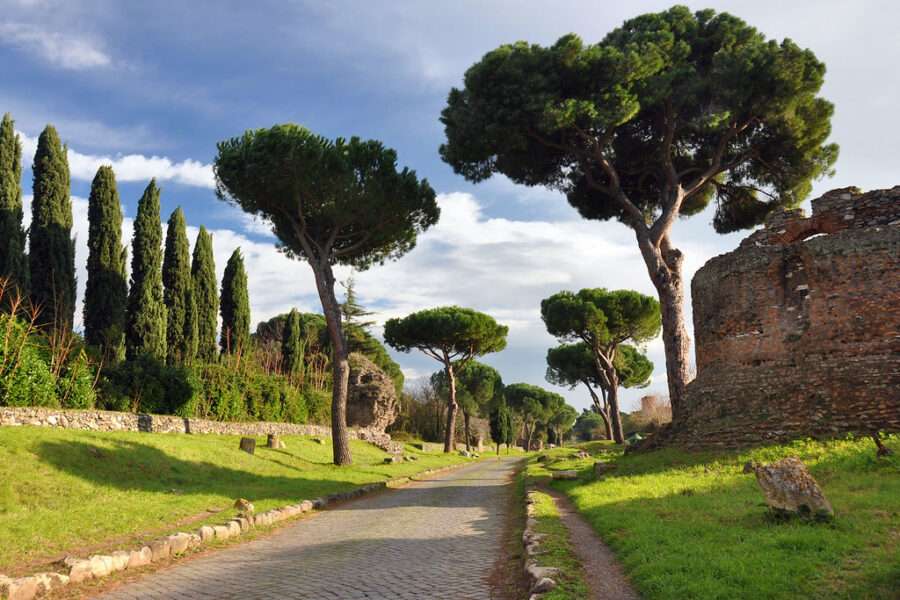
18. The Appian Way
“All roads lead to Rome.” The famous phrase dates back to the 1st century when Rome was the navel of the world.
It’s more than 80,000 kilometers connecting the city to Brittany and even to Persia.
The Appian Way is one of the most famous roads in Rome. It was constructed in 312 BCE and nicknamed the “Queen of Roads.”
It stretches over 300 miles and connects Rome to the southern parts of Italy.
Originally built for military purposes, it later became a key trade route that boosted commerce and communication.
A large part of the road is well preserved and can be visited today. It is lined with ruins, tombs, and catacombs.
Most of the tombs belong to important and wealthy figures from ancient Rome, the majority being merchants and religious figures; some of them are very elaborate, with paintings covering the walls.
As a highlight of the Appian Way, we have the Catacombs of St. Sebastian, the Tomb of Cecilia Metella, and the Aqueduct.
Best Appian Way Guided Tour
- 1 – Rome Catacombs with Transfer – Visit the Catacombs of the Appian Way and learn about Rome’s shift from paganism to Christianity with this guided tour that also includes a transfer.
- 2 – Bike Tour Through The Appian Way – Explore the Appian Way in this customizable itinerary according to your interests.
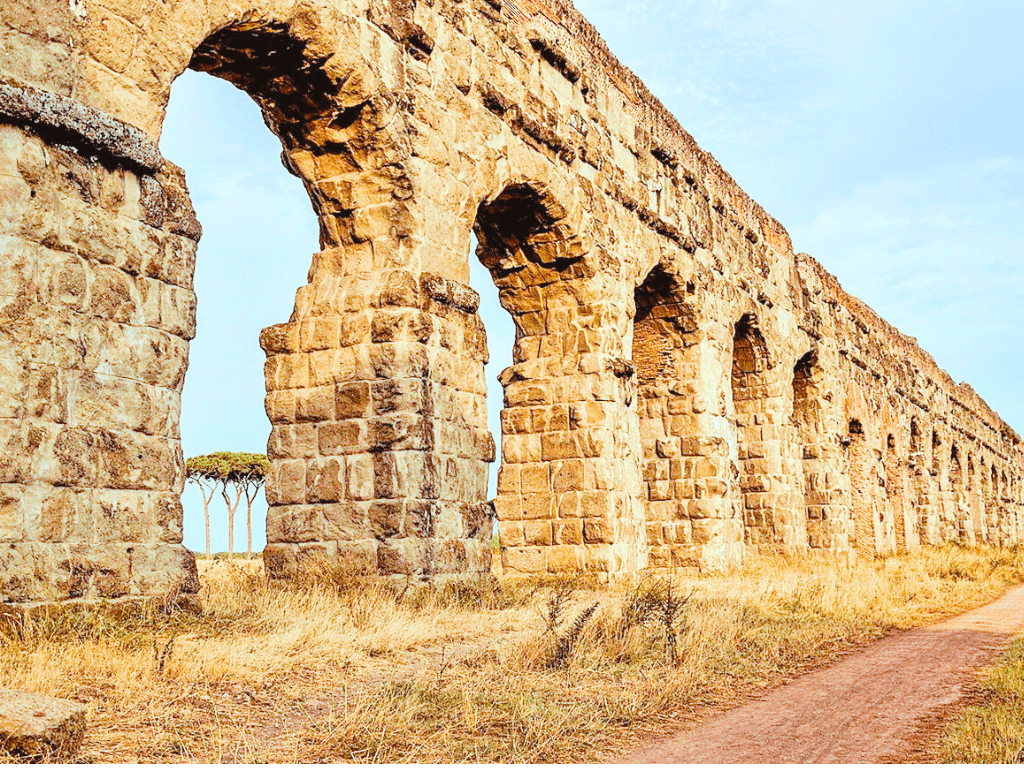
19. Park of the Aqueducts
The Park of the Aqueducts (Parco degli Acquedotti) is one of Rome’s hidden gems.
Located in the Appian Way Regional Park, this beautiful green space is home to the remnants of Rome’s ancient aqueducts, structures that once carried water to the heart of the empire from miles away.
Walking through the park, you’ll come face-to-face with the towering arches of the Aqua Claudia and Aqua Felix, their impressive engineering still on display after two millennia.
Locals often come here to jog, picnic, or relax, surrounded by the backdrop of these monumental structures.
If you’re looking for a unique, off-the-beaten-path experience in Rome, the Park of the Aqueducts is a must-visit.
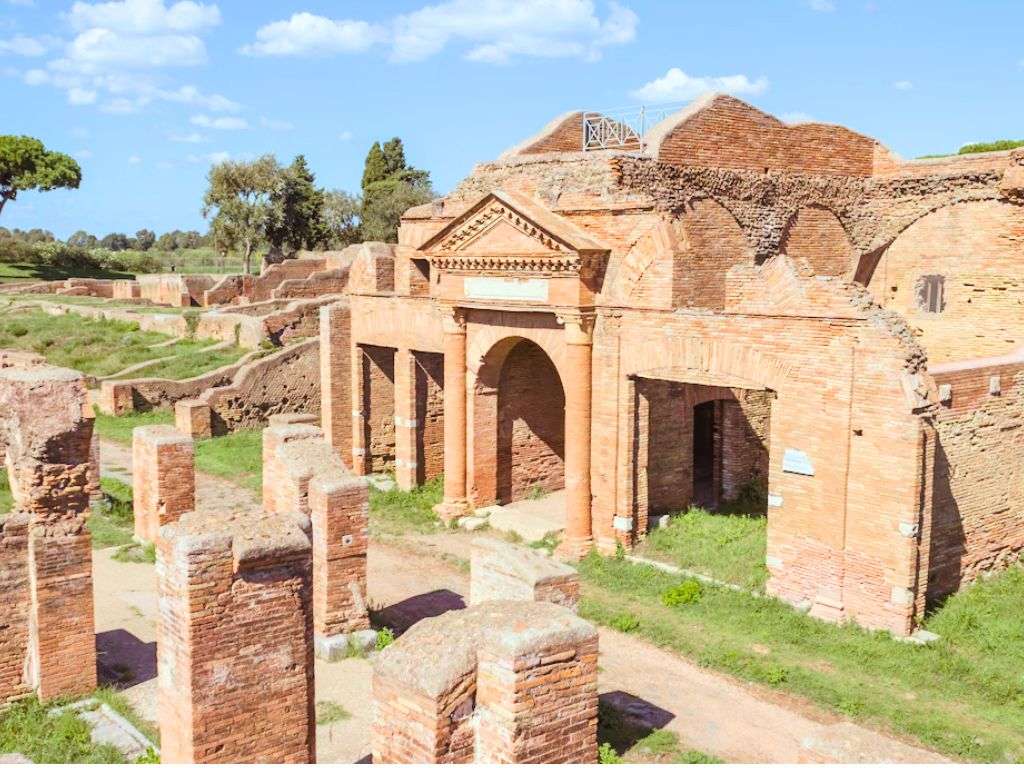
20. Ostia Antica
Ostia Antica was once the port city of ancient Rome. It was key for trade and commerce, connecting the empire to goods from around the Mediterranean.
Unlike many other ruins, Ostia Antica is remarkably well-preserved, with its streets, buildings, and mosaics.
What makes Ostia Antica so unique is how immersive the experience is.
You can roam freely through the remains of ancient taverns, temples, and even a forum that served as the heart of the city’s public life.
The mosaics, especially those in the Baths of Neptune, are stunning and offer beautiful insights into the art and culture of the time.
Because it’s slightly off the beaten path compared to Rome’s more famous sites, Ostia Antica often feels quieter and more intimate.
This text was originally written and posted in July 2019 and updated in November 2024. New information has been added and links have been updated so that it could offer a better experience to the reader.
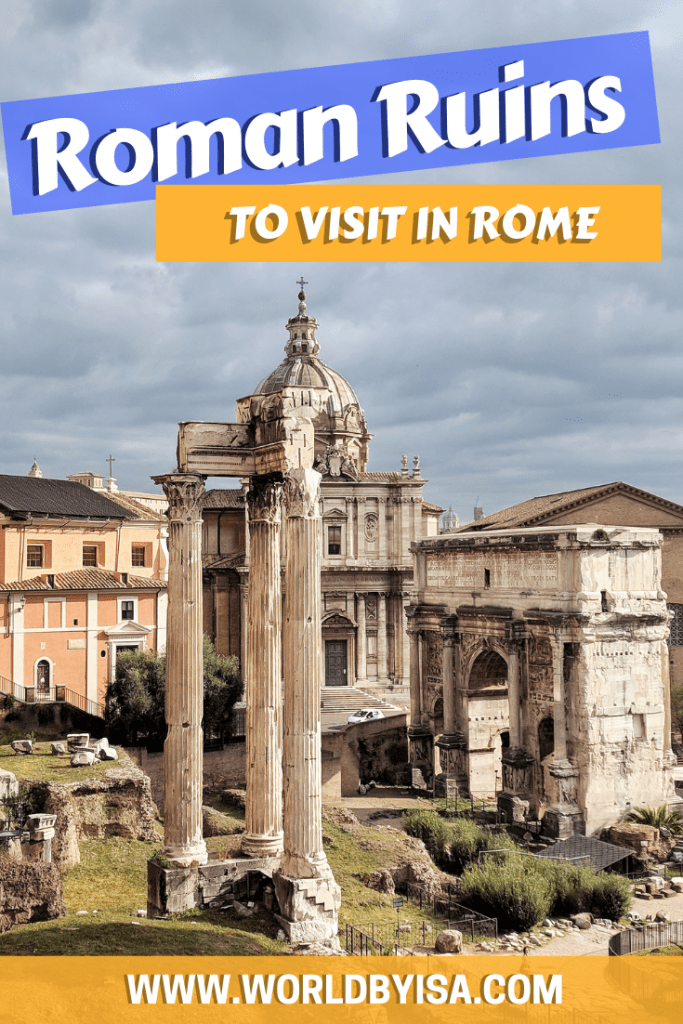
More About Rome
- 3 Days in Rome Itinerary
- How Many Forums Did Rome Have?
- Guide to the Palatine Hill: 10 Monuments to See
- Christmas in Rome: Best Things to Do
- How to get to Rome Termini from Fiumicino Airport
Italy Travel Essentials
- FLIGHT TICKET: Get the best flight deal with Skyscanner.
- ACCOMMODATION: Find the perfect accommodation on Booking.
- VISA: Apply for a Visa on iVisa.
- eSIM: Stay connected throughout your trip with Airalo eSim. It offers packages from 7 to 30 days for accessible prices.
- PRIVATE TRANSFER: Book your private airport transfer.
- RENT A CAR: Find the best rates on DiscoverCars.
- GUIDED TOUR: Find the best tours in Italy on GetYourGuide
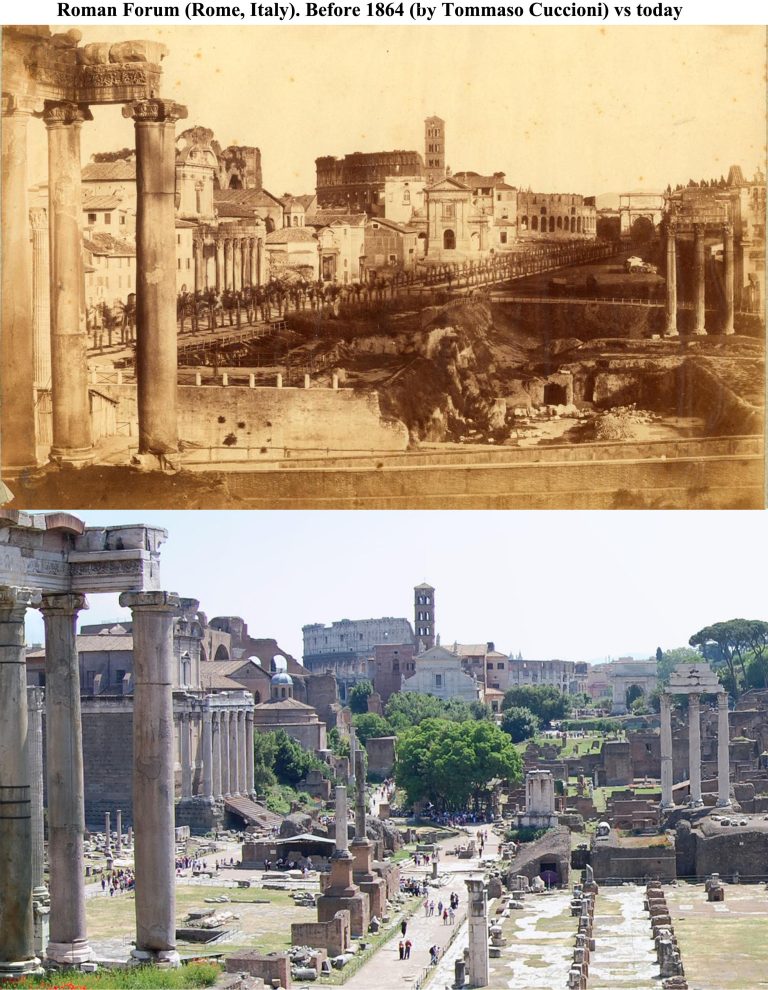

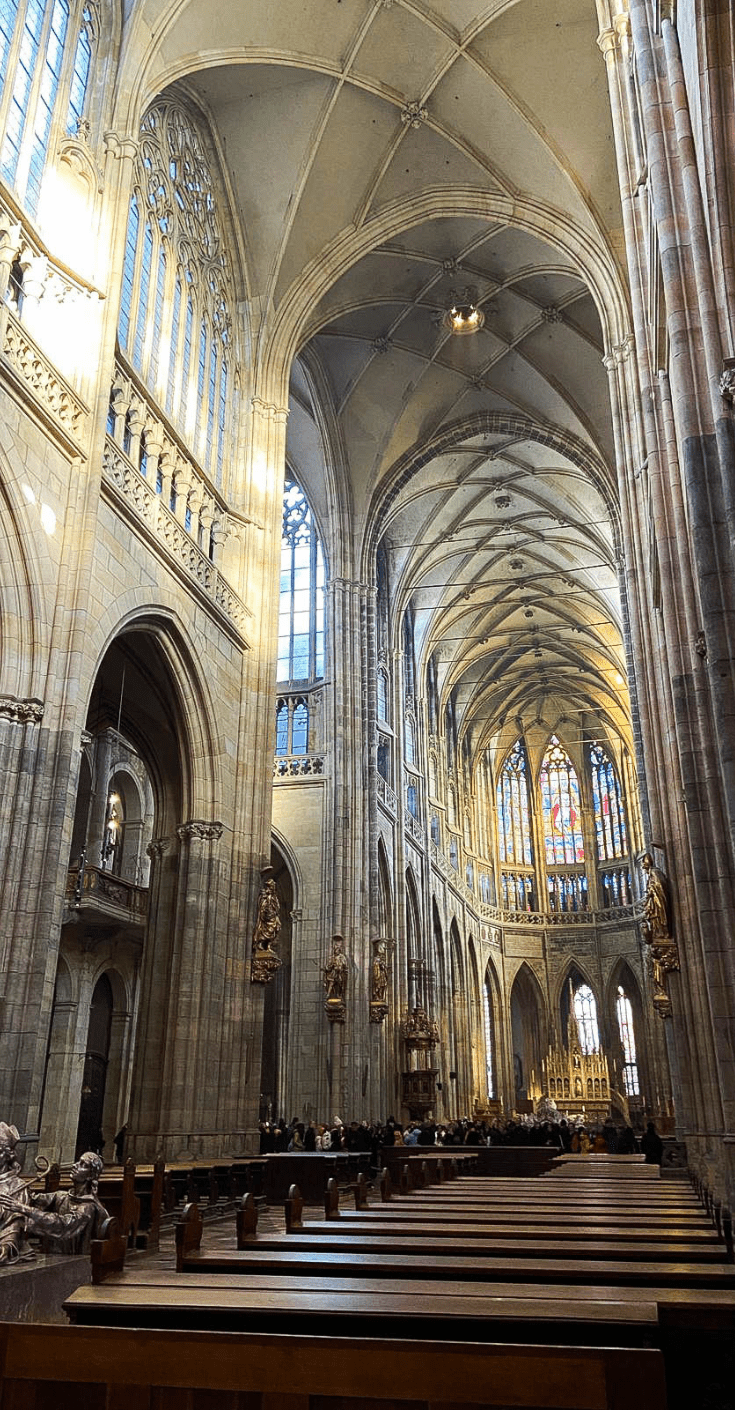



Such a beautiful collection of places! Takes me back to my only trip in 2006, think it may be time to start planning another trip!
There is a lot more history to Rome than I realised! It looks like a beautiful city that we would love to visit 😊